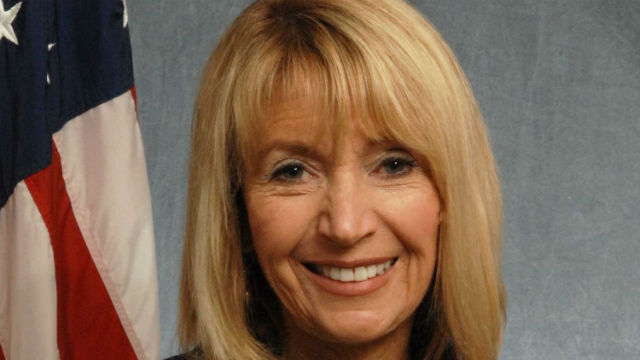Daily Business Report-Sept. 27, 2018
A report on California school policy finds the state lags in student achievement, and prescribes a much bigger investment in preschool. (Photo by MonkeyBusinessImages)
Report: To close California’s achievement gap,
spend a lot more on preschool
By Ricardo Cano | CALmatters
Sweeping reforms to the way California funds its public schools appear to be lifting student achievement, but this state may need to do and spend much more, particularly on early childhood education, if Californians hope to keep up with the rest of the country in closing its “achievement gap.”
That’s the takeaway from a recently released extensive research effort, the latest dispatch in a 10-year-old collective policy effort by California education scholars.
Researchers behind Getting Down To Facts II, a compilation of 36 studies and 19 briefs by more than 100 authors, concluded that the verdict is still out on the state’s Local Control Funding Formula, the school funding mechanism touted by Gov. Jerry Brown as a landmark education reform when he signed it into law in 2013. The formula channels extra state dollars to schools with the greatest concentration of needy students.
But, researchers found, there are promising signs of its impact. That includes a correlation between those concentrated spending boosts and “significant increases in high school graduation rates and academic achievement, particularly among poor and minority students.”
Spending $1,000 more per student in grades 10-12 boosts high school graduation rates by 5.9 percentage points, the researchers concluded, and they found a similar correlation between spending and upticks in average reading and math test scores for low-income students in 11th grade.
So targeting state money seems to make a difference for disadvantaged students. But while California kids may be improving across the board, the report found, California lags most other states in closing the longstanding achievement gap between Asian and white students and black and Latino students.
Though California students may be learning at the same rate as their peers elsewhere, they aren’t catching up because so many are handicapped by a lack of preparation even for kindergarten, the researchers concluded.
“California’s lag in academic achievement,” writes the research group led by Stanford education professor Sean F. Reardon, “arises before children even enter the schoolhouse door.”
The findings underscore the state’s longstanding debate over investment in early childhood education and universal preschool, an expensive proposition, given that K-12 spending is already the state budget’s dominant line item.
One group of researchers calculated that California would have to increase K-12 funding by about a third for all of the state’s 6.2 million students to meet the state standards—an estimated $22 billion. As a point of reference, that’s about $2 billion more than the twin Delta tunnels’ estimated price tag.
The Local Control Funding Formula overhauled the state’s system for funding district and charter schools by giving more money to schools that have larger populations of foster youth, English language learners and kids from low-income households. The mechanism removed the “categorical” buckets of funding that limited how schools could spend their dollars in place of more flexibility.
School superintendents largely favor the new funding system, according to a research survey. But Susanna Loeb, the principal investigator for Getting Down To Facts II, said “some districts struggle with how to allocate resources effectively given their flexibility, and a large group of districts do not have access and necessary supports to build the knowledge and skills that they need to use resources effectively.”
Education leaders and policymakers have said it will likely take years to meaningfully conclude whether the new policy is working as intended. But educators and advocates have celebrated the new funding system because it helped renew focus—and steer money—toward addressing persistent gaps in achievement between disadvantaged students and the rest of their peers.
Meanwhile, civil rights advocates and some state legislators have raised ongoing concerns that it is difficult to track whether schools are actually spending this money on the students it’s intended to help—part of why policymakers are interested in this week’s follow-up study.
Christopher Edley Jr., president and co-founder of the Opportunity Institute, a Berkeley nonprofit focused on student equity, likened the question of whether Brown’s education reforms will result in more equitable student outcomes to an “experiment” still playing out.
“It’s a hope on the part of the folks in Sacramento and elsewhere that the evolution of responsibility combined with local participation and policy making would result in more equitable outcomes,” Edley said.
“At this stage those hypotheses about evolution and local control or local participation are unproven,” he said. “We don’t yet know whether this experiment will work in terms of improving outcomes (and) narrowing our disparities.”
The Getting Down To Facts II research was led by Stanford University and Policy Analysis for California Education and is intended to drive education policy making discussions at the California Capitol.
Among other top findings:
The state has limited data infrastructure that “produces very little information on what makes an excellent education for its own students.”
California is among the worst states in the country for student access to health care and mental health services, yet it would take less than $100 per student for those services to be brought up to “a basic level.”
Other funding issues regarding pensions, special education and school facilities threaten the success of recent reforms such as the Local Control Funding Formula if left unaddressed.
The massive repository of studies follows up on the landmark 2007 Getting Down To Facts mega-study, and generally strikes a more optimistic tone on the direction of the state’s education system than its predecessor.
The studies conducted more than a decade ago concluded that California’s school finance and governing systems were “fundamentally flawed” at the time.
_____________________
CoachLogix enters Australia and Asia market
CoachLogix, a San Diego-based technology company that has developed an advanced coaching management platform, announced that it is expanding into the APAC market. Existing CoachLogix clients include LinkedIn, Mayo Clinic and Walmart.
As part of the expansion, CoachLogix has received an investment from one of its existing clients, Stephenson Mansell Group (SMG), one of Australia’s top leadership development firms. SMG, which has offices throughout Australia and the Asia Pacific region, has invested $500,000 in the company as part of an ongoing capital raise by CoachLogix.
The founder and CEO of CoachLogix, Alex Pascal, said that this investment will help CoachLogix continue to focus on maintaining its market-leading position through product development, as well as on sales and marketing efforts as the company continues to grow in North America, Europe and APAC.
_____________________

Comic-Con brings Storytelling
Across Media to Balboa Park
Comic-Con is bringing Storytelling Across Media (SAM), a one-day symposium for aspiring writers and artists as well as professionals interested in the art of storytelling, to San Diego on Saturday, Nov. 3, to the Comic-Con Museum, in Balboa Park. The event was previously held in San Francisco in 2016.
Not a traditional comics convention, SAM does not feature an exhibit hall. Instead the event will focus on storytelling through a series of talks about how to tell a story in various media including comics, gaming, animation, movies, and more. The symposium endeavors to shine a spotlight on, as well as examine, the similarities and differences in telling stories through diverse forms of media, and focuses on the craft of telling a story through creator lectures.
“We’re thrilled to present SAM this year,” said David Glanzer, spokesperson for Comic-Con. “The symposium is an important part of our mission and to have it at the future home of the Comic-Con Museum makes this event all the more special.”
Admission to SAM is free, however online registration is encouraged, and seating for all symposium events is limited. SAM will be held Nov. 3 from noon to 6 p.m. at the Comic-Con Museum, 2131 Pan American Plaza, San Diego.
SAM is produced by San Diego Comic Convention and is part of the San Diego Comic Convention family of events.
_____________________
SDSU appoints Conrad Prebys chair in virology

Dwayne Roach, a virologist who previously studied virus-host immunity interactions at the Pasteur Institute in Paris, has been appointed to a newly endowed faculty position in biomedical research at San Diego State University.
Roach started this month as the Conrad Prebys Chair in Virology, joining the Department of Biology’s Viral Information Institute.
The chair was established by a $2.5 million endowment in 2014 from the late Conrad Prebys, who also gave SDSU $20 million to support student scholarships, including biomedical research scholars.
“The opportunity to join the Viral Information Institute and its world-renowned faculty was a big factor in my decision to join SDSU,” said Roach. “The institute has a strong community of scientists from divers fields including data science, evolutionary biology, genetics, mathematics physics, and cell biology. SDSU is a very exciting place to begin my independent research career.”
_____________________
Salk’s Tatyana Sharpee elected
fellow of American Physical Society

Salk Associate Professor Tatyana Sharpee, a member of the Computational Neurobiology Laboratory, has been elected a 2018 Fellow of the American Physical Society (APS) for her outstanding contribution to physics. In particular, she is granted this honor for “advancing our understanding of how neurons represent sensory signals and make decisions by pioneering new methods for analyzing neural responses to natural stimuli and uncovered organizing principles for closed loop behaviors,” according to the organization.
Sharpee’s work aims to develop a unifying theory of how biological systems process information. Specifically, she is uncovering how animals sense and adapt to their environment, as well as make predictions and decisions. To do this, she applies methods from physics, mathematics and information theory to chart the principles by which the brain’s billions of neurons exchange energy and information.
Among her discoveries are insights into how the brain’s visual system processes natural visual inputs, how different cell types divide work among themselves and how odors can be organized on a curved surface whose directions reveal properties like pleasantness or acidity.
_____________________
Lyft challenges San Diego residents
to Ditch Their Cars for 30 Days
Lyft is announcing Ditch Your Car, a program offering $584 of transportation credit for San Diegans to give up their cars for 30 days from Oct. 8 to Nov. 6 in favor of getting around town with shared Lyft rides, MTS, Zipcar and Discover Bike San Diego.
Starting Sept. 26, San Diegans will be able to register at ditchwithlyft.com/SanDiego for the opportunity to receive credit toward Lyft, MTS, Zipcar and Discover Bike San Diego.
“The way that people move around cities is changing faster than ever, and we are excited to challenge San Diego residents to change their everyday habits and give up their car for a month,” said Hao Meng, market manager for Lyft San Diego. Lyft alone is not the overall solution to overcome transportation hurdles, but by partnering with MTS, Zipcar and Discover Bike San Diego, we are able to create a full menu of mobility options for San Diego residents.”
It’s great that all transportation providers are on board to get people to try alternative modes, said Paul Jablonski, CEO of the Metropolitan Transit System. The Ditch Your Car promotion, in conjunction with our Free Ride Day on Oct. 2, gives people many ways to explore how to use other modes to travel across our region.”
Here’s how it works:
- Sign up here. 50 people will be randomly selected to participate.
- Once chosen for the challenge, participants will receive an email with the details of the program (including transportation instructions and credits).
- Transportation credits include Lyft, MTS, Zipcar and Discover Bike San Diego to get around the city for one month.
- $300 Lyft Shared Credit
- MTS Premium Express monthly pass ($102 value)
- Zipcar membership and free activation, plus $100 drive credit ($132 value)
- Discover Bike San Diego one month membership ($50 value)
The Challenge starts Oct. 8 and ends Nov. 6.
____________________
Presenting the 2018
MetroConnect companies
San Diego Mayor Kevin Faulconer, World Trade Center San Diego, JPMorgan Chase & Co. and business leaders unveiled the 20 companies selected to participate in the 2018 MetroConnect program, a comprehensive export assistance program designed to help local companies accelerate their global growth.
The MetroConnect Companies:

___________________
Cubic Corp. gets $22 million upgrade contract
Cubic Corp. announced that its Cubic Transportation Systems business division has been awarded a $22 million upgrade contract from the Los Angeles County Metropolitan Transportation Authority to enhance its automatic fare collection system. The system links 25 regional agencies through a common contactless smart card branded TAP. Operational since 2005, the TAP network now supports more than 1.5 million passholders.
____________________
Personnel Announcements
James Gartland named city’s lifeguard division chief

James Gartland has been named chief of the lifeguard division of the San Diego Fire-Rescue Department. Gartland had served as interim chief for the past six months.
Gartland has been a SDFD lifeguard for 23 years. He is a graduate of San Diego State University with a degree in business administration/accounting and completed the Wharton College Mission Critical Team Professional Development Program. He is currently a member of the Type 3 San Diego All-Hazards Incident Management Team and has served as the chair of the San Diego Regional Aquatic Lifesaving Emergency Response Task Force and the Area Maritime Security Subcommittee on Preventative Radiological Nuclear Detection.
Gartland also spent 18 months as the regional maritime emergency preparedness manager with the city’s Office of Homeland Security. He is currently the president of the Old Town Academy School Advisory Board and has volunteered for San Diego Coastkeeper and Clairemont Hilltoppers Little League. Chief Gartland has been an officer with the San Diego Lifesaving Association and the San Diego Association for Lifeguards. He was also a former fiduciary and trustee of the San Diego City Employees Retiree Medical Trust.
____________________
Todd Morrow named president of HempMeds

San Diego-based Medical Marijuana Inc., the first publicly traded cannabis company in the United States, announced Todd Morrow as the new president of the company’s subsidiary, HempMeds.
In his new role, Morrow will oversee all facets of the HempMeds organization, focusing on continued growth and development of the company’s premier brand, Real Scientific Hemp Oil. Morrow, who has more than 19 years of experience in product development, merchandising and marketing, plans to launch new product offerings and help build and maintain product registrations globally for the company.
Prior to his new role, Morrow served as vice president of merchandising and merchandise planning and allocation for Santa Monica-based company, Independent Pet Partners Holdings LLC. Prior to Independent Pet Partners, Todd held various leadership positions at Petco Animal Supplies and Pirch, a luxury appliance and plumbing retailer.
HempMeds was the first company to ever bring hemp-based cannabidiol oil products to market in the U.S. in 2012.



